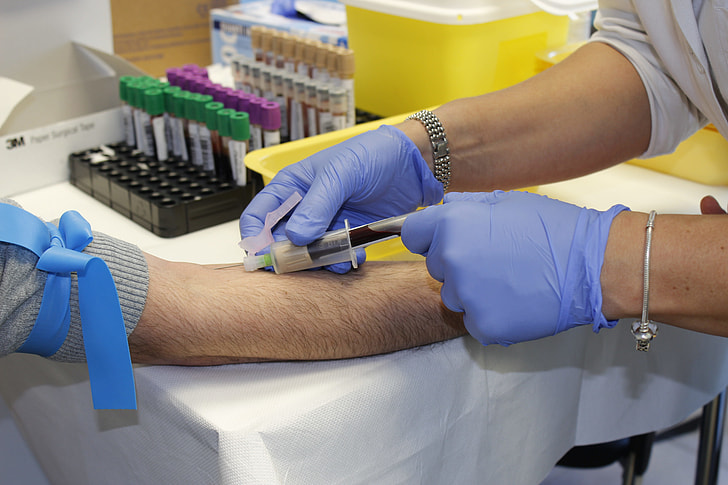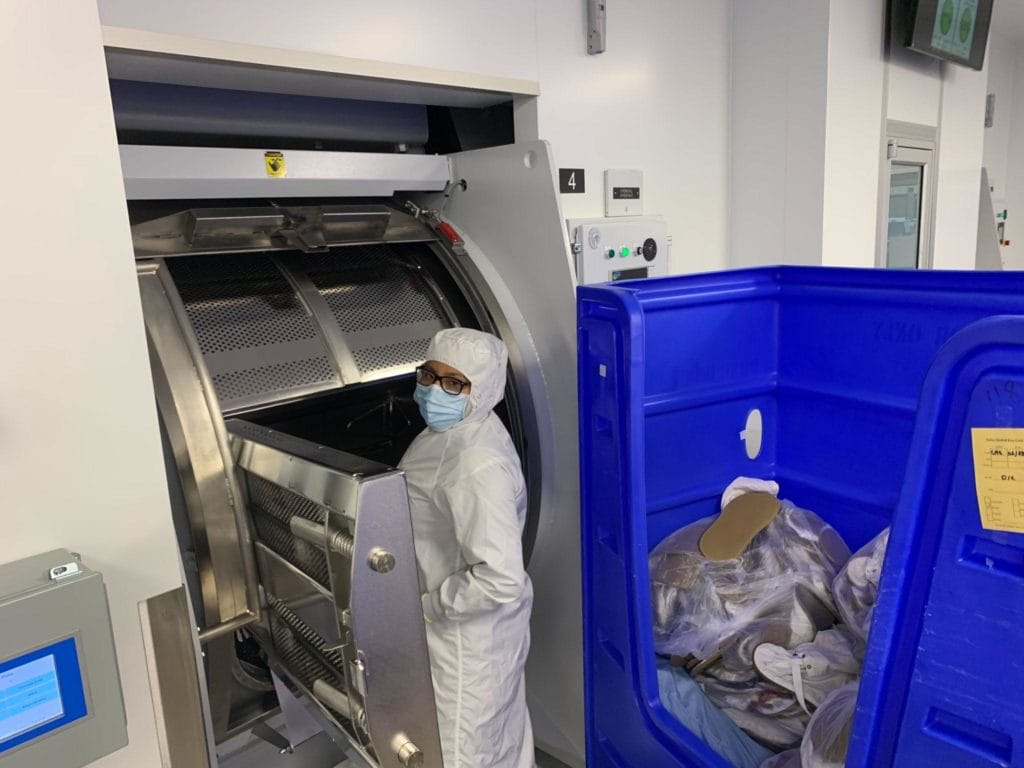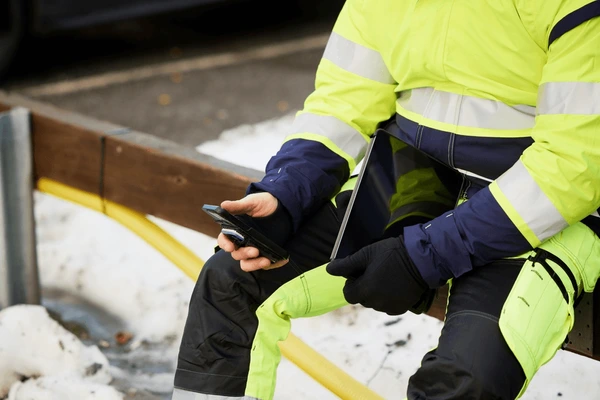
The global transition toward circular manufacturing and low-carbon supply chains has accelerated dramatically since 2023. Driven by environmental regulation, corporate carbon accounting, and ESG reporting, buyers in 2025 are demanding workwear that delivers professional durability while significantly reducing environmental impact.
Among all materials in modern performance workwear, rPET (recycled polyester) stands out as the fastest-growing solution. Produced from post-consumer PET bottles, textile waste, and industrial polyester scrap, rPET offers:
- Up to 75% lower energy use than virgin polyester
- Up to 65% lower CO₂ footprint
- A fully traceable, certifiable, and scalable supply chain
- Compatibility with all major industrial workwear applications
This white paper combines:
- Industry fundamentals
- Compliance and certification
- Material engineering
- Use-case case studies
- ROI evaluation
- Procurement framework
- Implementation roadmap
…to create the 2025 buyer’s guide for rPET workwear, applicable to:
- Factory procurement departments
- International apparel brands and importers
- Government & infrastructure project buyers
- Large enterprises pursuing ESG compliance
- Dairy, construction, transportation, energy, logistics, food processing, public service, and municipal sectors
Google Snippet – Quick Answer
Recycled polyester (rPET) workwear provides high durability, industrial wash performance, stain resistance, and lower environmental footprint while meeting EN, ISO, ANSI, and government procurement standards.
In 2025, buyers should prioritize:
- GRS, OEKO-TEX, and ISO-certified recycled textile supply chains
- Traceability to bottle, chips, and yarn level
- Lifecycle cost evaluation (TCO, not just purchase price)
- Durability testing including Martindale, pilling, colorfastness, and industrial wash cycles
rPET is now capable of replacing virgin polyester in uniforms, hi-vis workwear, protective coats, food-processing PPE, corporate apparel, and outdoor/industrial garments.
1. Why rPET Workwear Matters in 2025
1.1 The New Procurement Reality
By 2025, global procurement leaders face three simultaneous pressures:
| Pressure | Source | Impact |
|---|---|---|
| Regulatory transparency | EU Green Deal, CBAM, U.S. government procurement rules, corporate ESG reporting | Buyers must prove material origin and emission reduction |
| Rising cost of virgin petroleum | Oil price volatility and global trade disruptions | Manufacturers seek more stable long-term raw materials |
| Sustainability as brand competitiveness | Customers, retailers, and government tenders | Sustainable sourcing improves bid success and contract retention |
For procurement managers, this means:
rPET is no longer just “eco-friendly” – it is becoming a mainstream industrial compliance requirement.
1.2 rPET in Numbers – Global Market Overview
- Recycled polyester now accounts for 18–22% of global polyester production
- Over 70% of recycled polyester volume comes from post-consumer PET bottles
- Adoption in corporate and workwear sectors growing at CAGR 11–17% (2023–2028)
- Government tenders in Europe increasingly specify GRS-certified textile content
This shift is strongest in:
- Government procurement
- transportation, aviation & airport management
- construction and infrastructure
- security, defense, and public service
- industrial manufacturing uniforms
- food processing and HACCP-zone workwear
- major retail and supermarket chains
- logistics and delivery platforms
- sustainability-led branded apparel
In other words:
Any company serving large-scale public or enterprise clients will encounter rPET requirements soon—if not already.
1.3 Why Polyester Recycling is a Perfect Fit for Workwear
Workwear demands:
- abrasion resistance
- high tensile strength
- colorfastness
- shape retention
- water/oil stain resistance
- industrial wash durability
- printing/branding compatibility
Virgin polyester became dominant in workwear because it delivers these properties consistently.
rPET delivers the same mechanical properties, plus:
- lower emissions
- traceable sourcing
- reduced dependence on fossil fuels
- better alignment with 2025 government procurement rules
From the perspective of a purchasing officer:
rPET is not a compromise – it is a risk-reducing upgrade over virgin polyester.
2. What is Recycled Polyester (rPET)?
Recycled polyester can come from three major streams:
| Category | Source | Use in Workwear |
|---|---|---|
| Post-Consumer (PCR) | Bottles, packaging, used apparel | Most common and most recognized in tenders |
| Post-Industrial (PIR) | Yarn waste, scrap fabric, fiber waste | Stable quality and lower processing variability |
| Chemical recycled closed-loop | Polyester chemically depolymerized and re-polymerized | Highest purity and nearing virgin quality |
2.1 Mechanical vs. Chemical Recycling
Mechanical (Most Common)
Process:
- Collection & sorting
- Washing
- Flake production
- Melt extrusion
- Yarn spinning
Advantages:
- Lower energy usage
- Lower cost
- Mature supply chain
- Large production volumes
Limitations:
- Slightly lower viscosity retention
- Requires better filtration and QC to ensure workwear performance
Chemical Recycling (Growing Fast)
Process:
- Polyester chemically broken down into monomers
- Re-polymerized for near-virgin quality
Advantages:
- Highest purity
- Infinite recyclability
- Suitable for medical, aviation, food safety–critical uniform textiles
Limitations:
- Higher cost
- Still scaling industrial capacity
3. Certifications and Regulatory Requirements for 2025
To supply to Tier-1 brands, government tenders, and large institutional buyers, rPET workwear should meet regulatory frameworks across three dimensions:
- Sustainability & traceability
- Safety & chemical compliance
- Workwear performance standards
Below is the unified certification map.
3.1 Sustainability & Traceability Standards
| Certification | Meaning | Why It Matters |
|---|---|---|
| GRS – Global Recycled Standard | Verifies recycled content + chain of custody + environmental & social compliance | Required in 2025 by many government and retail tenders |
| RCS – Recycled Claim Standard | Verifies recycled content % | Suitable for medium-scale private sourcing |
| OEKO-TEX Standard 100 | Human-safe chemicals | Important for corporate, food-processing, and medical uniforms |
| Higg MSI / FEM | Environmental impact scoring | Used by major brands for ESG reporting |
| ISO 14064 Carbon Footprint | GHG reporting framework | Needed for low-carbon procurement declarations |
3.2 Safety and Chemical Compliance
Required to enter:
- EU
- UK
- U.S. federal procurement
- Canada
- Japan
- Australia/New Zealand
Standards include:
| Standard | Region | Requirement |
|---|---|---|
| REACH | EU | No restricted substances |
| POP Regulation | EU | Limits persistent organic pollutants |
| California Prop 65 | USA | Consumer chemical safety |
| CPSIA | USA | Lead/phthalate restriction |
| GB 18401 | China | National textile chemical standard |
In practice:
Any manufacturer claiming “rPET workwear” but lacking OEKO-TEX and REACH documentation risks immediate disqualification in audit.
3.3 Workwear Performance Standards
Hi-Vis PPE
| Standard | Region | Content |
|---|---|---|
| ISO 20471 | Global | Reflectivity + visibility requirements |
| ANSI 107 | USA | HV safety classes |
| AS/NZS 1906.4 | Australia | Reflective performance |
Recycled polyester hi-vis fabrics must:
- Maintain high luminance
- Stability after industrial wash
- Support heat transfer / screen printing / embroidery
General Workwear Fabric Durability
| Test | Metric |
|---|---|
| Martindale Abrasion | 30,000–100,000 cycles depending on specification |
| Pilling (ISO 12945) | Grade 4–5 preferred |
| Colorfastness (ISO 105) | Grade 4+ |
| Tensile and tear strength | Match or exceed virgin polyester |
Industrial Laundry Compatibility
Commercial uniforms must withstand:
- 60–90°C wash cycles
- Chemicals
- Steam finishing
- Dryers and tunnel finishers
A competent supplier will provide:
- Before/after wash test data
- Wash shrinkage performance
- Reflective tape adhesion validation
- Certification for 50–100+ industrial wash cycles
4. Material Engineering Options for rPET Workwear
To replace virgin polyester in professional-grade uniforms and industrial PPE, recycled fibers must be engineered for strength, wash resistance, comfort, and branding compatibility. Below is a complete engineering map used in modern 2025 rPET workwear supply chains.
4.1 Fiber Types in rPET Workwear
1) Standard rPET Filament
- Most widely used
- Suitable for woven and knitted structures
- Tensile and tear strength equivalent to virgin polyester
- Good dimensional stability
- Low pilling
Best for:
- Uniform shirts
- Softshell jackets
- Outer shells for coats
- Hi-vis woven fabrics
- Work trousers
2) Textured (DTY) Recycled Yarn
Mechanically textured for:
- Soft hand feel
- Enhanced covering power
- Breathability
- Mechanical stretch
Best for:
- Polo shirts
- Sports-inspired workwear
- Lightweight industrial apparel
3) High-Tenacity Recycled Polyester
Engineered tensile strength up to:
- 600–1,200 Denier
Advantages:
- Improved durability
- Required for abrasion-intense applications
Used in:
- Work jackets
- Cargo trousers
- Tool vests
- Outdoor industrial garments
For buyers:
If your team works in construction, mining, infrastructure, metal processing, or logistics, this category should be a baseline requirement.
4) Recycled Microfibers
Microfilament rPET allows:
- Higher density
- Lower porosity
- Finer drape
Applications:
- Food processing coats
- Medical uniform tops
- Executive corporate uniforms
- Lab and cleanroom garments
4.2 Knitted vs. Woven rPET
| Attribute | Knitted | Woven |
|---|---|---|
| Strength | Moderate | Higher |
| Comfort & stretch | High | Medium |
| Air permeability | High | Medium |
| Industrial wash resistance | Good | Excellent |
| Best uses | Polo shirts, sweatshirts, cycling-style uniforms | Hi-vis jackets, cargo pants, industrial coats |
In 2025 many buyers are selecting hybrid garments:
- Woven body for durability
- Knitted panels for stretch and motion zones
- Full industrial wash resistance
4.3 rPET + Stretch Blends (Elastane-Free Options)
Historically, workwear stretch relied on:
- Spandex (elastane)
But elastane is:
- Hard to recycle
- Loses mechanical stability in industrial washing
Now, many 2025 fabrics use:
- Mechanical stretch yarn engineering
- PET re-engineered texturizing
Benefits:
- 100% recyclable
- No elastane degradation
- More stable after 50–100 wash cycles
4.4 Waterproof & Breathable Laminates Using rPET
Three Approaches:
A) PU/RPET Coating
- Low cost
- Good hydrostatic pressure
- Easy to clean
- Suitable for dairy, food, cleaning, and wet industrial zones
B) TPU Membranes
Advantages:
- Higher breathability
- Greater durability
- More comfortable in hot environments
C) Recycled PET Membranes
Emerging fast due to:
- Full recyclability
- Higher ESG score
- Opportunities for closed-loop circularity
Applications:
- Rail/airport uniforms
- Municipal infrastructure
- High-performance outdoor-grade workwear
4.5 DWR (Water Repellent) Finishing
Old C8 fluorocarbon finishes are disappearing due to:
- EU POP regulation
- U.S. EPA restrictions
- Government procurement blacklists
Most workwear now uses:
- C6
- C0 fluorine-free
- Plant-based repellents
Some suppliers also provide:
- Recycled DWR chemicals, though not yet universal in 2025.
5. Industry Use Cases & Case Studies
Buyers do not care only about “sustainable fabric”. They care about:
- Better durability
- Lower long-term cost
- Workplace comfort
- Compliance in auditing
- Supporting tender qualification
Below is a map of how rPET performs in different industries.
5.1 Construction & Infrastructure
Work Environment
- Constant friction and abrasion
- Tool carrying and knee impact
- Dirty surfaces and oil/stain exposure
- Long industrial wash cycles
Uniform Solution
- High-tenacity rPET canvas
- 80–320 gsm
- Reinforced knee and hip abrasion zones
- Fluorine-free DWR accumulation
Performance Result
- 35–60% longer life than cotton or poly/cotton
- Lower maintenance cost
- Zero conflict with government green procurement rules
5.2 Municipal, Security & Government
Growing drivers:
- ESG reporting
- Waste management requirements
- Public purchasing transparency
- Increasing CBAM-style carbon accounting
Typical purchases:
- Hi-vis road crews
- Security teams
- Parking inspectors
- Public infrastructure staff
Case Result
A Southeast European government replaced virgin polyester uniforms:
- Unit cost increase: +7%
- Service life improvement: +52%
- Waste reduction: –44%
- Tender qualification score: +23% due to sustainability credits
5.3 Logistics & Delivery
Uniform requirements:
- Flexibility
- Constant motion
- Seasonal conditions
- Easy printing
- Industrial wash
Benefits
- Mechanical stretch rPET eliminates elastane decay
- Durability reduces re-order frequency
- Branding holds longer (screen, heat seal, DTF)
Large parcel operators now standardise:
- 80–100% rPET uniforms
- Reflective taping that can also be recycled
5.4 Food Processing & HACCP Environments
rPET advantages:
- Smooth surface reduces bacterial entrapment
- Easy high-temperature cleaning
- Compatible with color coding for contamination control
-
Can meet:
- FDA
- EU food contact guidelines
- BRCGS
- ISO 22000 facility audits
Result:
- Fewer stain-retention issues
- Higher hygiene scores
- Lower water and chemical usage during washing
5.5 Aviation, Airport & Rail
These buyers need:
- Smart durable presentation
- Mechanical stretch
- Lightweight
- No pilling under seat belt and strap friction
rPET in this segment improves:
- Tensile strength
- Pill rating
- Blazer and trouser crease retention
5.6 Corporate & Retail Uniforms
Benefits:
- Softer hand feel
- Recycled marketing value
- Ideal for large retail brand rollouts
Typical fabrics:
- 150–300 gsm twill
- Microfiber shirting
- Engineered stretch knits
Stores increasingly promote hangtags stating:
“Made from 18 recycled bottles.”
6. ROI Calculation – The True Cost Picture
The biggest mistake buyers make is:
Evaluating price only at the garment purchasing level.
Industrial uniform projects should evaluate:
- Total Cost of Ownership (TCO)
Including:
- lifespan
- wash degradation
- repair rates
- shrinkage/wrinkling
- fabric failure under abrasion
- contract-extension implications
Below is a full comparison.
6.1 Cost Components
| Parameter | Virgin Polyester Uniform | rPET Uniform |
|---|---|---|
| Unit price | Lower | Slightly higher |
| Durability | Medium | High |
| Wash degradation | Medium | Low |
| Warranty claims | Higher | Lower |
| Future regulation risk | Medium/High | Very low |
| Tender scoring | Low | High |
6.2 Example Financial Model (1000 Workers)
Assumptions:
- One uniform set per year
- Industrial washing 3–4 times/week
- 52-week service
Scenario A – Virgin Polyester Uniforms
| Cost Category | Annual Cost |
|---|---|
| Purchase price | $48,000 |
| Repair & re-order | $14,000 |
| Product failure downtime | $3,600 |
| Total | $65,600 |
Scenario B – rPET Workwear
| Cost Category | Annual Cost |
|---|---|
| Purchase price | $52,000 |
| Repair & re-order | $6,200 |
| Failure downtime | $1,100 |
| Total | $59,300 |
Net savings:
$6,300 per year per 1,000 uniforms
Plus:
- Higher tender scoring
- Zero conflict with green ESG compliance
6.3 When Does rPET NOT Save Money?
Situations where virgin polyester may remain suitable:
- Single-use applications
- Fast-turnover project uniforms
- Environments with no industrial washing
- Temporary contract workers
For all others:
rPET wins in 2025 on lifecycle economics.
7. Supplier Evaluation Checklist (Buyer Use)
Before choosing a recycled uniform supplier, require:
7.1 Certification Documentation
- GRS certificate number
- OEKO-TEX certificate
- REACH declaration
- Lot/batch traceability documentation
7.2 Material Testing Data
Ask for:
- Martindale abrasion
- Tensile strength
- Pilling
- Industrial wash tests
- Colorfastness
- Tape adhesion for hi-vis
7.3 Social and Factory Compliance
Request:
- BSCI
- ISO 9001
- ISO 14001
- SMETA audits
7.4 Lot Traceability System
Many government audits in 2025 require proof of:
- Bottles → chips → yarn → fabric → garment
- Supply chain custody certificate
Ask:
“Can you issue traceability reports by production batch?”
7.5 Sample Requirements
Run:
- 30-day factory and worker trials
- Parallel testing with existing uniforms
8. Government & Tender Application Requirements
rPET requirements in tenders typically show up as:
Mandatory Criteria
- “Minimum 30% GRS-certified recycled content”
- “OEKO-TEX Standard 100 required”
- “Supplier must provide traceability documentation”
Optional Scoring Bonuses
- +5–20 tender points for sustainability
- Priority scoring for renewable materials
- Extra points for chemical recycling
Declaration Requirements
Procurement departments may ask:
- Material origin
- Carbon footprint per garment
- Washing life cycle
- Chemical compliance certificate
In Europe, many municipalities now require:
Annual reporting of recycled content consumption and CO₂ reduction.
9. Procurement Roadmap for 2025 Buyers
Step 1 – Define Performance Requirements
- work environment
- wash cycles
- friction/abrasion level
Step 2 – Request Certified rPET Samples
- min. 30%–100% recycled content
- GRS documentation
Step 3 – Issue Parallel Test Orders
- Test against existing garments
- Evaluate real wash results
Step 4 – Traceability Confirmation
Supplier should confirm:
- bottle → chip → yarn → fabric → garment
Step 5 – Staff Feedback
Important metrics:
- heat stress
- movement flexibility
- stain retention
- odor retention
Step 6 – Annual Cost Calculation (TCO)
Compare:
- downtime
- repair rates
- replacement rates
Step 7 – Use Tender Scoring to Win Business
Show:
- CO₂ reduction
- compliance
- certifications
- ESG alignment
This is crucial when selling to:
- governments
- airports
- rail companies
- public service contractors
- infrastructure operators
10. Workwear Solutions: rPET Supply Capabilities
Workwear Solutions offers:
A) Material Coverage
- rPET woven fabrics
- DTY & textured yarn
- hi-vis outer shells
- microfilament shirting
- waterproof breathable laminates
- 100% recycled reflective tapes (option)
B) Full GRS-Compliant Supply Chain
Traceability includes:
- bottle washing
- chips
- polymerization
- filament spinning
- yarn processing
- weaving/knitting
- finishing
- garment manufacturing
C) Third-Party Certifications
Available:
- GRS
- OEKO-TEX Standard 100
- REACH compliance
- BSCI & ISO9001 factory audits
D) Product Delivery Range
- municipal and government uniforms
- industrial workwear
- dairy & food PPE
- logistics and e-commerce uniforms
- airport and railway corporate apparel
- construction & engineering suits
- outdoor protective jackets
- office and retail brand uniforms
E) Branding Options
- reflective heat transfer
- screen printing
- embroidery
- transfer graphics
- laser logo
- brand hangtag support (“made from 12 recycled bottles”)
11. Conclusion
In 2025, the global workwear market sits at the intersection of:
- sustainability regulation
- supply chain transparency
- lifecycle cost reduction
- environmental accountability
- large-scale institutional tendering
Recycled polyester (rPET) is now:
- fully cost-competitive
- high performance
- certifiable
- scalable
- traceable
- aligned with government and enterprise ESG requirements
Procurement leaders who adopt rPET today will:
- reduce long-term purchasing cost
- improve tender scoring
- increase brand trust
- future-proof against regulation
- lower environmental footprint
- modernize workforce identity
The era of rPET replacing virgin polyester in professional uniforms has already begun. Buyers who transition early will lead—not follow—the 2025 market.
📩 For certified rPET workwear sourcing:
Email: [email protected]
🌐 www.workwearsolutions.net
Zion Zhang
Recent Posts
 From Silver Ions to Copper Threads: Comparing Antimicrobial Technologies2025年11月20日Modern food processing and pharmaceutical manufacturing […]
From Silver Ions to Copper Threads: Comparing Antimicrobial Technologies2025年11月20日Modern food processing and pharmaceutical manufacturing […] Antimicrobial Fabrics: The Hidden Hero in Food & Pharma PPE2025年11月20日Food and pharmaceutical production environments demand the […]
Antimicrobial Fabrics: The Hidden Hero in Food & Pharma PPE2025年11月20日Food and pharmaceutical production environments demand the […] Case Study: How a Mining Firm Switched to 100% Recycled Fabrics2025年11月20日A major mining company successfully transitioned from […]
Case Study: How a Mining Firm Switched to 100% Recycled Fabrics2025年11月20日A major mining company successfully transitioned from […] Europe’s Circular Workwear Trend: What Emerging Markets Can Learn2025年11月19日The European workwear industry is increasingly embracing […]
Europe’s Circular Workwear Trend: What Emerging Markets Can Learn2025年11月19日The European workwear industry is increasingly embracing […] Why ESG Standards are Becoming a Must for Global PPE Projects2025年11月19日Global PPE projects are increasingly under scrutiny for […]
Why ESG Standards are Becoming a Must for Global PPE Projects2025年11月19日Global PPE projects are increasingly under scrutiny for […] Circular Workwear Programs: How Rental & Recycling Models Cut Waste2025年11月19日Circular workwear programs are transforming the traditional […]
Circular Workwear Programs: How Rental & Recycling Models Cut Waste2025年11月19日Circular workwear programs are transforming the traditional […]
CONTACT US
- Feel free to contact us any time. We will get back to you as soon as we can!
- +86-17303331701
